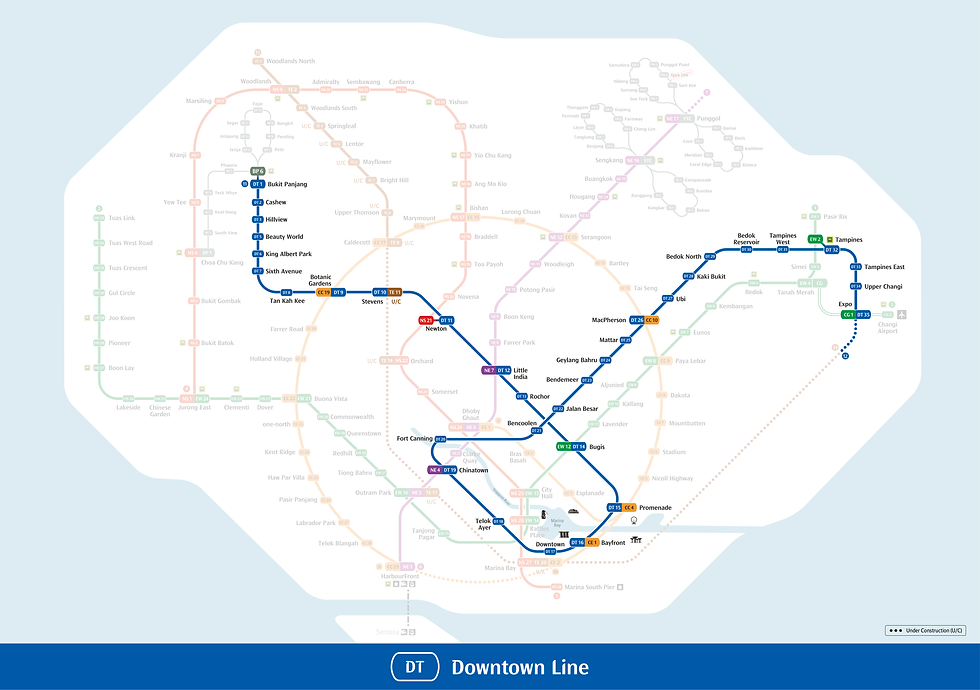- Sep 19, 2020
Singapore used to have a pretty place name, Woodbridge.
I am not being sarcastic here. By itself, the name “Woodbridge” is quaint, and evokes visions of a rural countryside, with dirt tracks running to a wooden bridge over a rushing stream. Unfortunately, the name has been irrevocably tainted with decades of stigma associated with mental illness.
The Institute of Mental Health (IMH) used to be known as Woodbridge. It began in 1928 as the Mental Hospital to the east of Yio Chu Kang Road, and was renamed Woodbridge Hospital in 1951. As part of institutional reforms for the treatment of mental issues in Singapore, the ageing complex was demolished in the early 1990s for a new one slightly to the northeast in Buangkok Green, and was accordingly renamed IMH.




There was also a road named Woodbridge. In the 1960s, part of historic Yio Chu Kang Road next to Woodbridge Hospital was realigned, to straighten the trunk road. The new channel retained the name Yio Chu Kang Road, while the original one was renamed Jalan Woodbridge, after the hospital next to it.

However, because of the stigma, the road was renamed Gerald Drive in 1998, after neighbouring Gerald Crescent. With that, the place name Woodbridge passed into history.

What gave rise to the place name Woodbridge, though?
While the name could have been of a European personality, the first thing that comes to mind is an actual wooden bridge in the area. If so, where was this bridge, and what became of it?
I might have found the location of this bridge.
In 1998, in his interviews with the National Archives of Singapore, retired rubber plantation manager Douglas Hiorns shared the following tidbit:

... (We) call it Jalan Hwi Yoh but it was very much a dirt track. And that petered out on after the Pang Kio, which is the Woodbridge and that it kind of just dispersed...
Jalan Hwi Yoh was a rural road running west of Yio Chu Kang Road. According to old maps of the area, it did run over a river, the Sungei Tongkang, a tributary of the Sungei Punggol, presently Punggol Reservoir. After crossing the Sungei Tongkang, Jalan Hwi Yoh indeed “petered out”, from a metalled road (marked by lines) to a footpath (marked by dotted lines). It seems that the crossing over the Sungei Tongkang was Pang Kio, or the original Woodbridge, the wooden bridge.
Today, the Sungei Tongkang has been canalised, but its course through the site of the original Woodbridge has more or less remained the same. After comparing old and present-day maps, I can confirm that the area has been redeveloped into an industrial park in Serangoon North. The location of the original Woodbridge still has a bridge over the canalised Sungei Tongkang - this time, Serangoon North Avenue 6 runs over the unnamed, modern, concrete bridge.


This is the new Woodbridge!
(I also find it quite amusing that an industrial building next to the new Woodbridge is occupied by Iron Mountain, a storage and information management services company founded in the United States. It seems fitting that an iron mountain lies next to a wooden bridge...)
So, the original Woodbridge is now part of the neighbourhood of Serangoon North. The site of Woodbridge Hospital has been redeveloped into the HDB flats of Hougang Avenue 9 and Hougang Street 91. These are more examples of the geography of place names changing or shifting over time because of urban redevelopment, as I’ve described in my book Jalan Singapura.
Of course, as with many historical narratives, there is a postscript, containing elements which do not fit in with the rest of a seemingly complete story.
In this case, Hiorns’ account does not really sync with the news report of the official naming of Woodbridge Hospital in 1951:

Chinese residents in Yeo Chu Kang have a name of their own for the Singapore Mental Hospital. They call it the “Woodbridge Hospital” because a wooden bridge used to be over the stream which runs by the side of the hospital.
Government has, therefore, to use the same name.
Hiorns’ location of Pang Kio, or Woodbridge, along Jalan Hwi Yoh doesn’t fit the description of “over the stream which runs by the side of the hospital”, as the Sungei Tongkang is quite some distance from Woodbridge Hospital.

One possible explanation is that Hiorns was correct, and the news article had printed wrong information about the location of the wooden bridge. Another explanation is that Hiorns was wrong, and the news article was correct, which meant the original Woodbridge was closer to the hospital. A third explanation is that both Hiorns and the news article were correct - and that there were two wooden bridges, both named Pang Kio or Woodbridge, the one closer to the hospital giving its name to the hospital. After all, I’m sure there were hundreds of wooden bridges all over Singapore.
So many possible paths in the landscape of History. I suspect more revelations to come.
This is the nature of History to me - fascinating, revealing, frustrating, and never a closed book.











